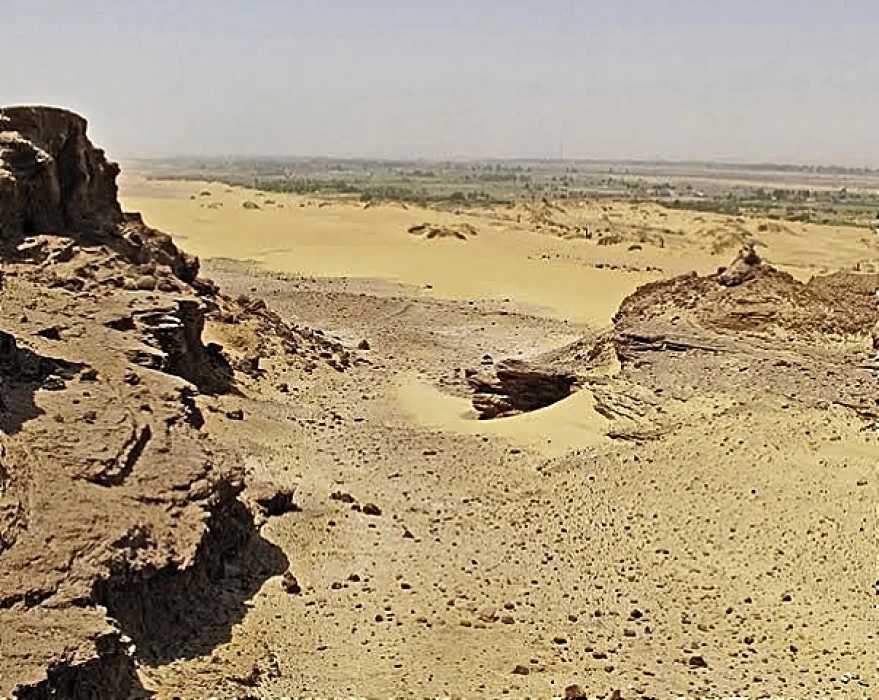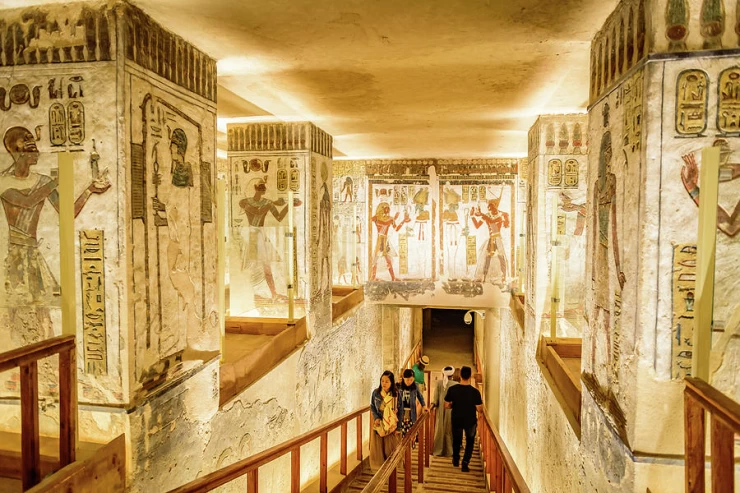
Darb al arbain | darb el-arbain caravan route
Darb al arbain
AL-ARBAIN started in Asyut went through Kharga, leapfrogged between the oasis of Bir Kiseiba, al-Shabab, and Selima, and ended its run somewhere in Darfur. From the medieval period onwards, it was one of the main conduits through which luxury goods and slaves entered Egypt from the south. It remains doubtful that its entire length was traveled in the Roman period, no firm evidence has surfaced at roadside sites south of Kharga.
The main link between Darfur and Egypt was a desert route known as darb al-Urbain or the Forty Days Road.
Beginning in the Darfur commercial center of Kobbei, it stretched north 1,117 miles through the oases of the Sahara to join the Nile just below the Egyptian town of Asyüt, and from there it proceeded directly to Cairo. Allegedly a fast courier could cover the distance in 12 days, though a caravan of several hundred camels and a thousand slaves might take anywhere from 45 to 90 days to complete the journey. Effective control of darb al arba'in necessitated the cooperation-willing or otherwise-of the Bedouin tribes whose territory the route passed through.
darb el-arbain caravan route
The size of caravans traversing darb al- arba'in varied considerably. Caravans of anywhere 2,000 to 24,000 camels were noted in the late- eighteenth century, though most were by the smaller end of this spectrum. The sheer difficulty of the route accounted for its importance since, unlike the riverine routes, it generally was free of banditry Slaves.
Sudanese merchants of the Nubian diaspora began to monopolize trade in slaves and ivory. Slave trading continued sporadically thereafter but dwindled in the tace of new political and economic conditions in Sudan.
Latest Articles
Admin
Seabourn Sojourn Cruise Stops in Safaga Port
The Seabourn Sojourn, the flagship vessel of Seabourn Cruise Line's ultra-luxury fleet, was built in 2008 at the T. Mariotti shipyard in Genoa, Italy. Measuring 198 metres, it can accommodate up to 450 guests in its 225 spacious all-suite staterooms.
Admin
Norwegian Sky Cruise Stops in Safaga Port
Norwegian Cruise Line operates a cruise ship called the Norwegian Sky. It was constructed in 1999 and can accommodate 2,004 passengers in addition to 878 crew members. The ship has several dining establishments, lounges and bars, a spa and fitness center, swimming pools, and a number of entertainment areas.
Admin
Explora II Cruise Stops in Safaga Port
Explora II, the second vessel in the Explora Journeys fleet, sets sail in 2024 to redefine luxury cruising. With 461 ocean-front suites, 9 culinary experiences, and 4 pools, this haven of sophistication and sustainability promises an unforgettable "Ocean State of Mind" journey to inspiring destinations.
Admin
Mein Schiff 6 Cruise Stops in Safaga Port
The Mein Schiff 6 is the latest cruise ship in the renowned TUI Cruises fleet, offering passengers a luxurious and sophisticated cruise experience. At 315 metres long, this floating resort features a range of dining options, entertainment, and recreational facilities, including a spa, fitness centre, and sports amenities.
Admin
Mein Schiff 4 Cruise Stops in Safaga Port
When the Mein Schiff 4 cruise ship docks in Safaga, Egypt, passengers are granted access to a realm of ancient wonders. Aboard this state-of-the-art vessel, guests can embark on meticulously curated shore excursions that showcase the region's most iconic landmarks, including the Giza Pyramids, the enigmatic Sphinx, and the remarkable tombs and temples of the Valley of the Kings in Luxor.
Admin
MS Europa Cruise Stops in Safaga Port
The Silver Moon, Silversea's latest flagship, is a luxury cruise ship that offers an exceptional travel experience for Venezuelans exploring Egypt. With a capacity of 596 guests and an impressive 40,700 gross tonnes, the Silver Moon maintains the small-ship intimacy and spacious all-suite accommodations that are the hallmarks of the Silversea brand.














